If you've been enjoying observing the 'Devil Comet' - Comet 12P/Pons-Brooks - this year from the Northern Hemisphere, you should make the most of it, as the celestial visitor is due to disappear from our skies as April 2024 draws to a close.
Comet 12P/Pons-Brooks is low in the sky in April, but if you have a low enough horizon you should be able to see it meet the planet Jupiter.
And, there's a chance that Comet Pons-Brooks will be visible during the April 8 total solar eclipse.
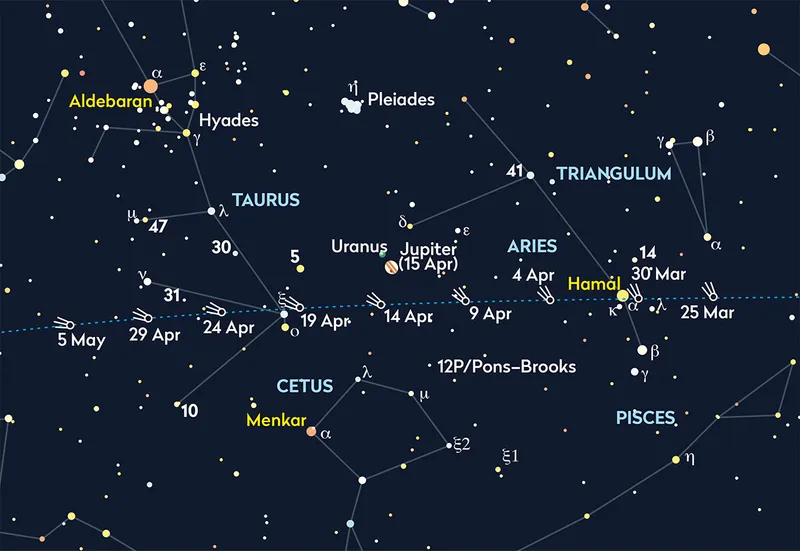
The story so far
Astronomers have been looking forward to the return of Comet 12P/Pons–Brooks for many years because it has repeatedly experienced ‘outbursts’ that have increased its brightness for brief periods.
On 20 July 2023, the comet brightened a hundredfold, from mag. 16 to mag. 11, after an explosive event on the surface of its nucleus sent 10 billion kilograms of material blasting off it into space.
Find out how to photograph Pons-Brooks in our guide on how to photograph a comet

When this happened, the comet was utterly transformed visually, changing almost overnight from a mere faint, circular smudge in telescope eyepieces to a much brighter anvil with a horn curving away on either side.
A change that saw it christened the Devil Comet on social media and in the press. Several other large outbursts have been observed in the months since.
Will such a dramatic event happen again with Comet 12P/Pons-Brooks in April?
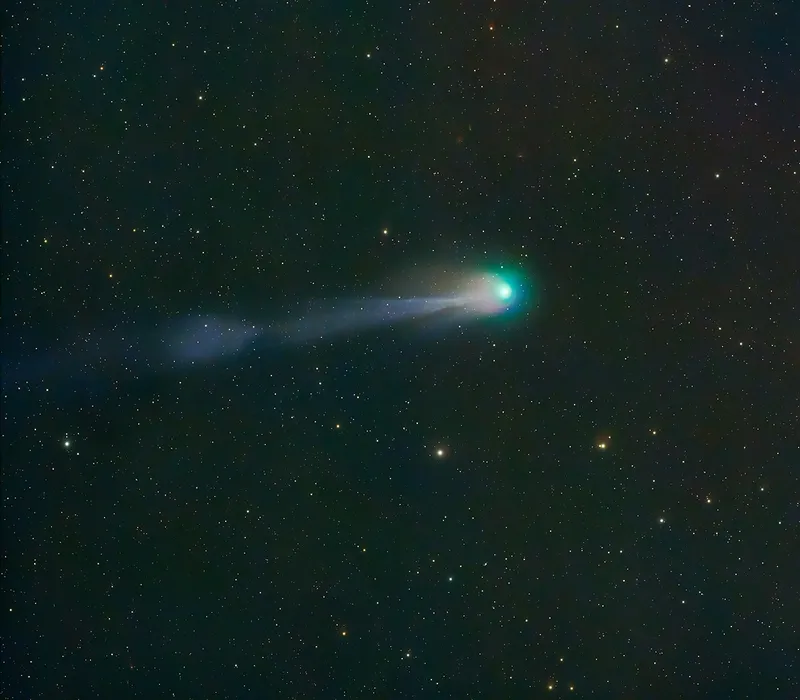
Like comet-watchers everywhere, we hope so, but there is no way of knowing in advance – which for some is part of the appeal!
If it does undergo another outburst, it could go from a modest, naked-eye smudge to something much brighter and more impressive.
But we can’t count on that happening. So, putting hope and hype aside, what can we expect to see in April?
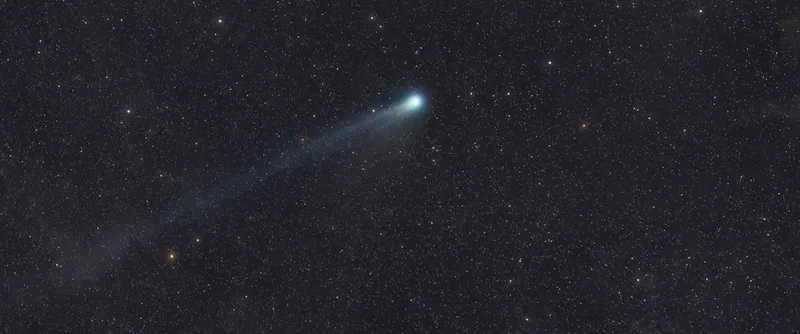
Comet 12P/Pons Brooks April 2024 key dates
As April begins, Comet 12P/Pons–Brooks is expected to have reached mag. 5.0, which will technically make it visible to the naked eye.
However, it will be low in the darkening twilight sky, so you’ll probably need binoculars or a small telescope to see it.
Photos taken of the comet in mid-February showed it was already sporting a 2˚-long tail, so the chances are that this feature will have grown longer and brighter.
Cross your fingers for a fuzzy grey-green smudge with a misty tail stretching away from it!
During April, Comet 12P/Pons-Brooks will appear to approach and then pass beneath one of the brightest planets in the sky, Jupiter.
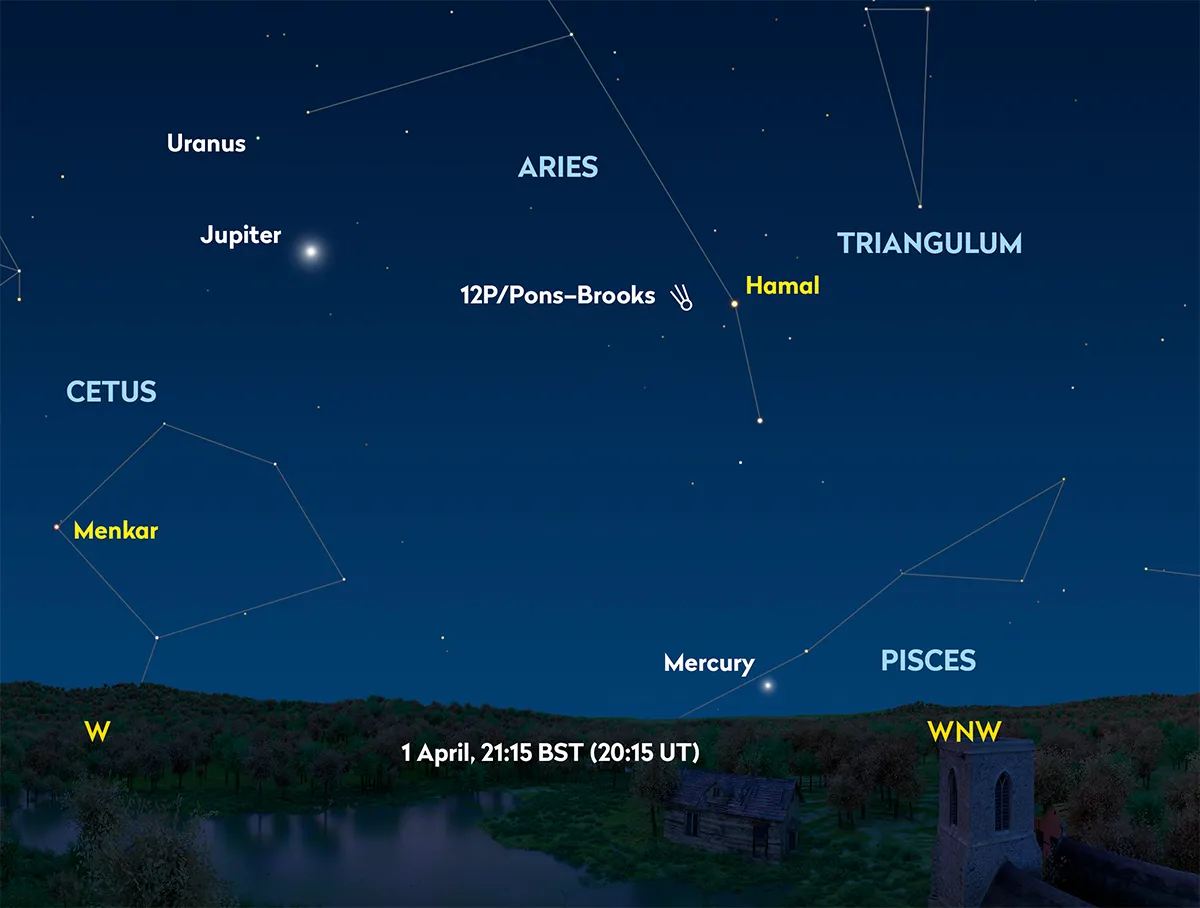
On 1 April, the two will be just under 13˚ apart, low in the northwest after sunset.
They might be difficult to see until the sky has darkened, as by that time they will be low, but still well worth looking for.
As the evenings pass, Pons–Brooks is expected to steadily brighten as it draws closer to Jupiter.
As both will be low in the northwest, aim to observe from an elevated or coastal location with an open horizon clear of hills, trees or buildings on the skyline, which will hide the planet and its cometary visitor from view.
The brightness of the sky will be an additional challenge to seeing the comet, although if it has another outburst it could be much brighter.
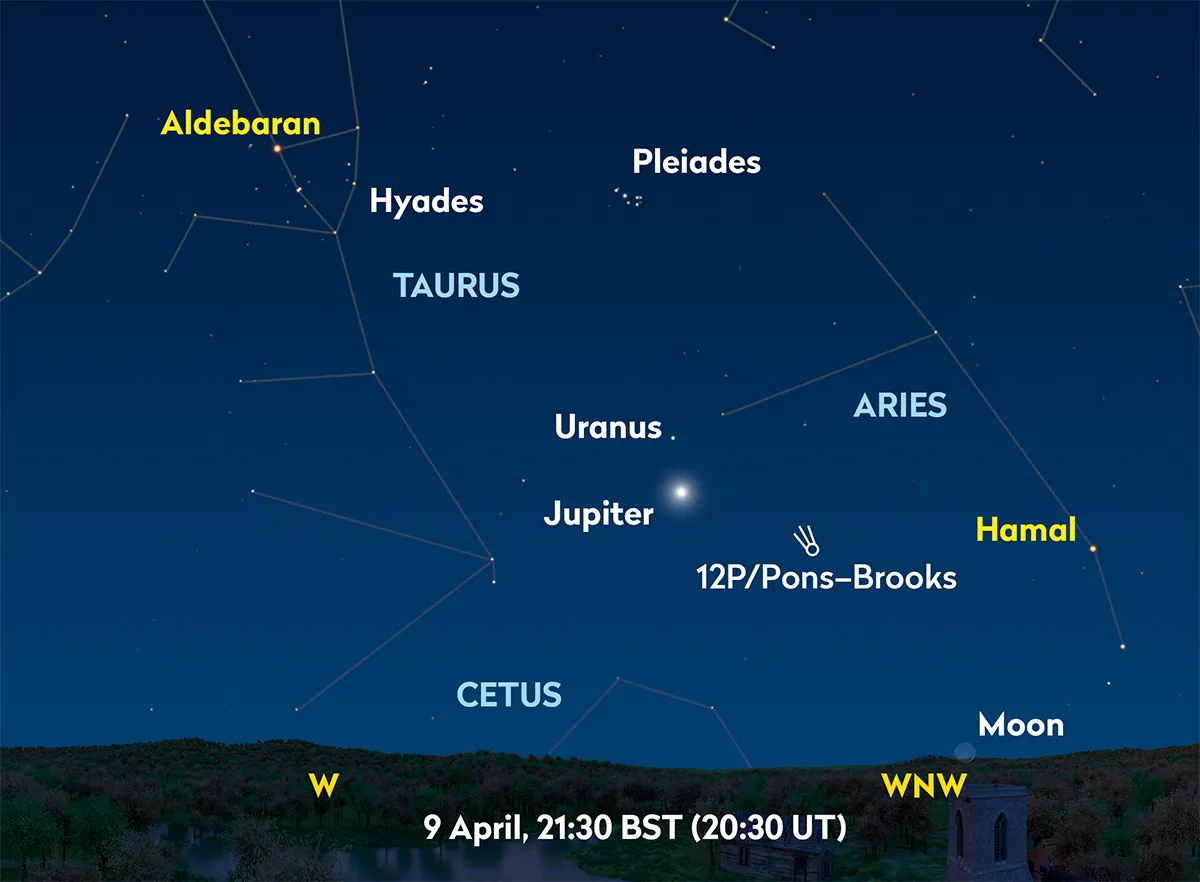
If the comet develops a tail of any decent length, we might see that poking up from behind the horizon after its head has set.
Crossing your fingers would be a good idea.
On 8 April, observers in the US watching the total solar eclipse could be in for an amazing treat, as Comet Pons-Brooks could be visible during the eclipse.
By the evening of 9 April, the comet and Jupiter will be just 5° apart.
Look out for a very thin crescent Moon forming a triangle with the comet and the gas giant low in the sky on 10 April.
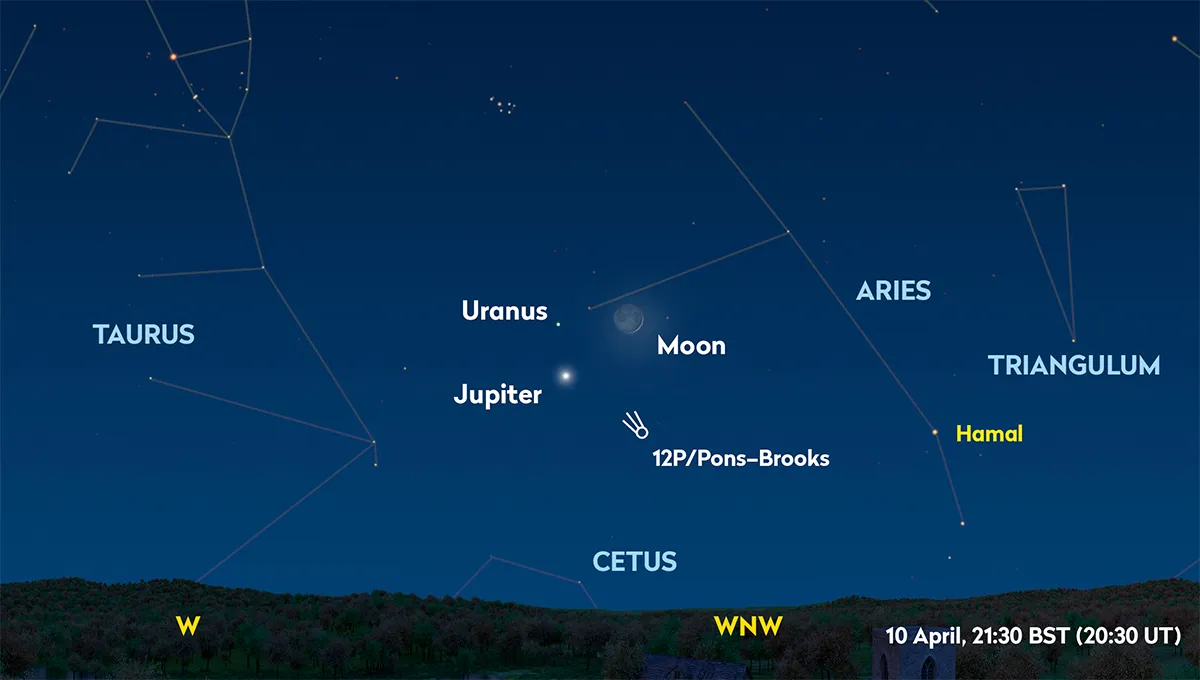
By the evening of 13 April, the comet and Jupiter will be just 3° apart and should both fit in the same binocular field of view.
However, the pair will be very low in the sky after sunset and, depending on how bright it is at this time, the comet could be drowned out by the twilight.
By 20 April, Pons–Brooks will have reached its peak magnitude, around mag. 4.4, but it will be setting just an hour after the Sun.
Again we’ll cross our fingers for an outburst that brightens it enough to fight through the twilight.

Comet 12P/Pons-Brooks quick facts
Comet 12P/Pons–Brooks was discovered in July 1812 by French astronomer Jean-Louis Pons.
It was recovered in 1883 by astronomer William Brooks, who identified it as the same comet seen in 1812, which is why it bears both astronomers’ names.
Pons–Brooks is a classic Halley-type periodic comet, which means it has an orbit around the Sun that takes between 20 and 200 years.
Pons–Brooks’s orbit takes 71 years – just a few years less than that of Halley’s Comet itself
It last visited our skies in 1953.
It was recovered again on 10 June 2020 when it was 11.9 AU (1.78 billion kilometres) away, still beyond Saturn.
It was shining, if that’s the right word, at mag. 23.
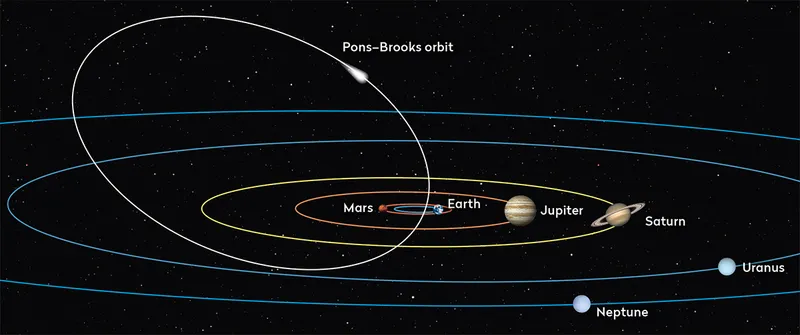
This occasional visitor is one of the brightest known periodic comets, regularly reaching naked-
eye brightness when it appears in our sky.
This is υ partly because of its size; Pons–Brooks’s nucleus is much larger than the average comet’s, with a diameter of 30km or so.
In comparison, Halley’s nucleus has a diameter of around only 15km; the nuclei of both comet Encke and 2020’s beautiful comet C/2020 F3 (NEOWISE) are just under 5km wide; while comet 67P/Churyumov–Gerasimenko, studied by the ESA Rosetta mission in 2014, has a diameter of only 4km.
In contrast, beloved Hale–Bopp is twice the size of Pons–Brooks, a whopping 60km in diameter.
If you manage to observe or photograph Comet 12P/Pons-Brooks this month, don't forget to send us your images
